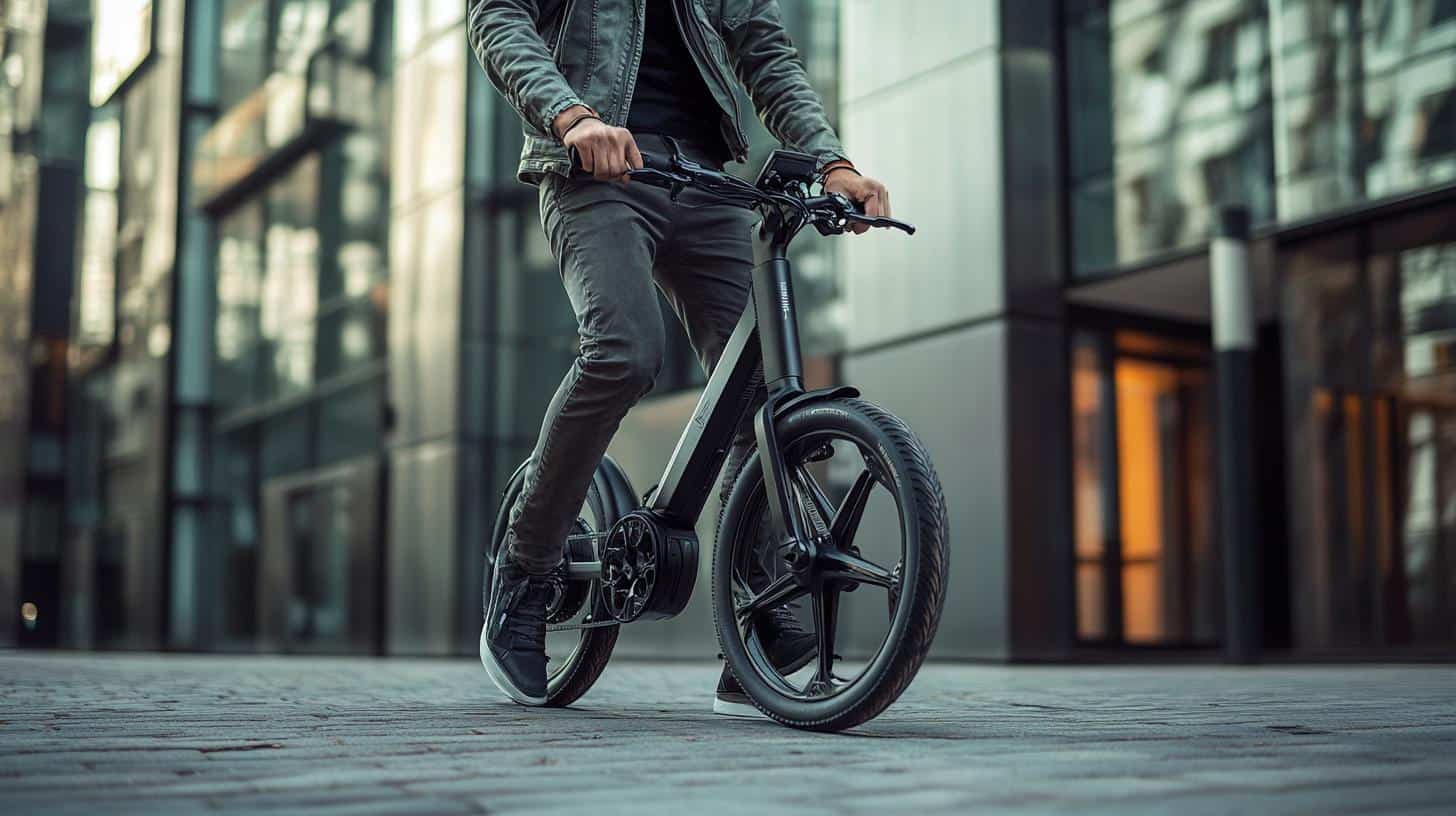Intersport is entering the electric foldable bike market with the upcoming release of the Nakamura Flexy Boost, designed for urban commuters. Priced competitively, this bike will be available in June 2025 for under €1,300.
Challenges of Urban Cycling and Intersport’s Response
City living, particularly in apartments without elevator or storage options, presents challenges for bicycle owners. Foldable bikes offer a convenient solution for storage and transport. As this market gains traction, Intersport aims to capture a share with its new model, providing an accessible option amidst higher-priced competitors.
Distinctive Folding Mechanism
The Flexy Boost features a unique folding design with a steel frame crafted in France. Unlike conventional models, its rear wheel folds under the frame, supported by the rear carrier’s wheels. The stem folds to the side, although the front wheel remains in place. To further compact the bike, the front wheel can be detached and secured to the frame’s side. Measuring 90 x 85 x 35 cm when fully folded, it is slightly larger than leading models but remains manageable.
Efficient Single-Speed Transmission
Equipped with a carbon belt-driven single-speed transmission and mechanical disc brakes, the Flexy Boost offers durability with minimal maintenance. Its electric propulsion system, powered by a Naka Hub Lite motor, provides sufficient torque for city use. Although it lacks advanced torque sensors, its minimalist control system facilitates ease of use.
Modest Battery Capacity and Weight
The bike uses a removable 250 Wh battery, mounted conveniently on the top tube, delivering around 30 km range and a rapid 1h45 charge time. While this capacity is modest, the Flexy Boost remains competitive in overall weight and functionality.
Anticipated Price and Market Entry
Set to hit stores at a tentative price of €1,299, the Nakamura Flexy Boost presents a budget-friendly alternative compared to similar models. However, prices may slightly rise, reflecting producer responsibility costs.
The Impact of Electric Foldable Bikes on Urban Life
The integration of electric foldable bikes into urban environments is reshaping city living. As populations in cities swell, traditional modes of transportation have become increasingly inefficient and congested. Amidst these urban challenges, electric foldable bikes offer a fresh, sustainable alternative for commuters.
The Rise of E-Bikes in Urban Spaces
Electric bikes, or e-bikes, bring a new level of convenience and accessibility to personal transportation. They have quickly gained popularity due to their ability to navigate crowded streets, provide exercise, and reduce carbon footprints. Unlike their larger electric vehicle counterparts, foldable e-bikes offer the ability to switch from road to rail seamlessly. Commuters can ride their e-bikes to a train station, fold them up for the ride, and then cycle to their final destination.
Benefits for Individuals and Communities
Individuals benefit greatly from incorporating foldable e-bikes into their daily routines. With traffic congestion often cited as a time drain, urban dwellers find relief in zipping past cars during rush hour without breaking a sweat, thanks to the electric assistance. Furthermore, e-bikes promote healthier lifestyles by encouraging more active transportation choices and reducing reliance on cars.
Communities at large experience various positives. A widespread adoption of e-bikes could lead to reduced traffic congestion, lower emissions, and quieter streets. Additionally, the e-bike industry spurs economic benefits, from creating jobs in manufacturing and sales to promoting local tourism as people use bikes to explore cities from a new perspective.
Controversies and Challenges
Despite their advantages, electric foldable bikes are not without controversy. Concerns about pedestrian safety arise as these bikes reach speeds that can surprise those on foot. Additionally, bike lane infrastructure often lags behind the adoption of e-bikes, leading to crowded and sometimes hostile cycling environments.
The environmental impact of battery disposal and the resource-intensive production process also raises questions. While e-bikes reduce emissions compared to cars, the extraction and processing of materials for batteries have their own ecological implications.
The Global Reach and Future of E-Bikes
Countries worldwide are embracing the electric bike trend. Many European cities, such as Amsterdam and Copenhagen, have long been advocates of cycling infrastructure, now further promoting electric options. In the United States, urban centers like New York City are beginning to expand bike lane networks to support this growth.
To learn more about the evolving e-bike industry, you can visit Copenhagenize, a site dedicated to urban cycling planning and design, or Bicycle Retailer for insights into the business side of biking.
Electric foldable bikes represent a significant shift in urban transport, offering both challenges and opportunities to individuals and cities worldwide. As technology advances and cities rethink infrastructure, the role of e-bikes is likely to expand, fostering more sustainable and efficient urban living environments.







